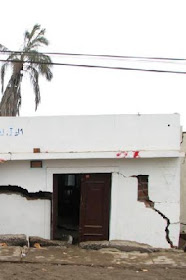Older properties where the damage level has not been too severe and/or the budget for repair is limited to mitigate swelling and shrinkage problem or damage of black cotton soils, a low cost approach is adopted which I shall explain in this post.
The techniques against black cotton soils involve application of measures to protect the soil mass from excessive wetting or drying. When using this approach, one accepts the existence of the expansive foundation soil and corrective work is focused on drainage-control strategies to keep the soils within an acceptable range of moisture content.
 This approach has the twin objectives of intercepting excessive moisture which would cause soil saturation while also shielding the soil from evaporation and other factors which would lead to excessive desiccation.
This approach has the twin objectives of intercepting excessive moisture which would cause soil saturation while also shielding the soil from evaporation and other factors which would lead to excessive desiccation. The simplest method to control moisture movement to black cotton soil is to provide apron around the property. The perimeter apron is a broad protective pavement which is applied to the surface grade around the entire perimeter of the building. All plants and planters are removed. All roof and surface drainage is controlled and directed away from the building.
Having installed the perimeter apron, one has put a covering on the soil surface which diverts all rainfall and drainage away from the foundation soils- mitigating soil saturation. At the same time during times dry periods, the foundation soils are protected from the sun and the wind which tend to suck the moisture out of the soil.
A perimeter apron can be of any durable paving material or “hardscape” such as asphalt, concrete, brick or flagstone. The important thing is that all joints or cracks are sealed up watertight. The use of plastic often placed under a layer of loose gravel, as a perimeter apron should be avoided. Plastic is too easily damaged and where gravel is used, water will accumulate and drain into the perforations.
The perimeter apron is particularly attractive because it is a duel-purpose improvement- it is both a protective apron and a walkway. Once the apron is installed, there exists an all-weather access around the building. For homeowners who love to have perimeter planters, this is certainly possible as long as the planters are put on top of the hardscape and excess irrigation does not penetrate into the foundation soil.

























